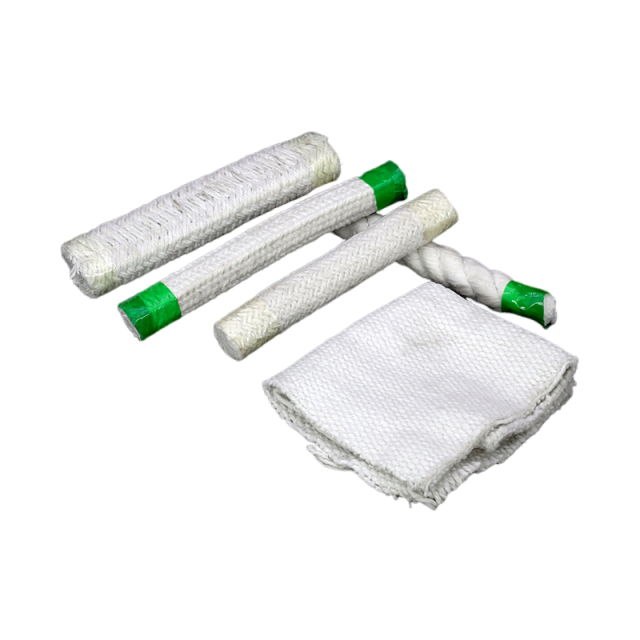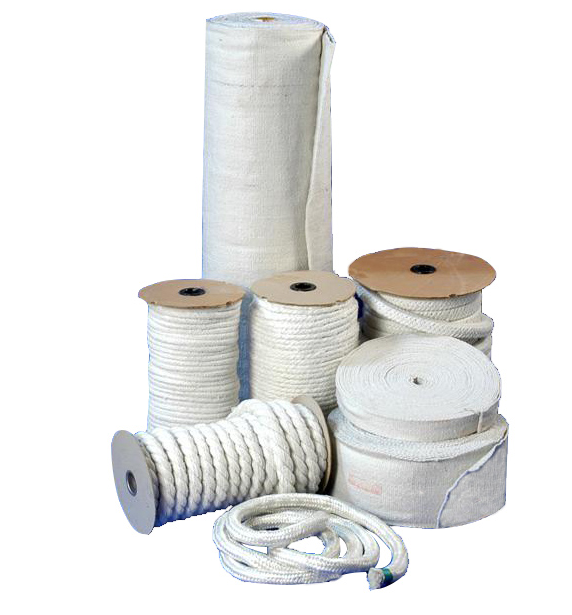Ceramic Fiber Textile: Unveiling the Versatile Wonder Material
In the realm of modern industrial materials, ceramic fiber textile stands out as a remarkable innovation with a wide array of applications and outstanding properties.
Product Introduction
Ceramic fiber textile is a high-temperature resistant material composed mainly of ceramic fibers. These fibers are typically made from alumina and silica, which endow the textile with exceptional heat resistance. Ceramic fiber textile is available in various forms such as blankets, fabrics, ropes, and tapes. The lightweight yet strong nature of ceramic fiber netting makes it an ideal choice for many demanding applications.
Technical Index
Item | Cloth | Tape | Round rope | Square rope | Yarn |
Density(kg/m3) | 500-600 | - | |||
Organic Content(%) | ≤15 | ≤15 | |||
Continuous Working Temp (℃) | 650 (Glass Fiber) | 650 (Glass Fiber) | |||
1000 (Stainless Steel ) | 1000 (Stainless Steel ) | ||||
Manufacturing Process
The production of ceramic fiber textile involves several intricate steps. Firstly, high-quality raw materials like alumina and silica powders are carefully selected. These are then melted at extremely high temperatures, usually in an electric arc furnace. The molten material is then spun into fine fibers using specialized spinning techniques. These fibers are further processed to enhance their properties, such as through needling or chemical treatments. For example, in the production of ceramic fiber blankets, the fibers are laid out in layers and then needled together to form a cohesive and strong structure. The needling process helps to improve the tensile strength and integrity of the ceramic fiber textile, ensuring its durability and reliability in various applications.

Properties and Advantages
High Temperature Resistance: Ceramic fiber batting can withstand temperatures up to 1260°C (2300°F) or even higher in some cases. This makes it suitable for use in furnaces, kilns, and other high-temperature industrial environments where traditional materials would fail.
Low Thermal Conductivity: Cetamic fiber padding has excellent insulation properties, effectively reducing heat transfer. This helps to conserve energy and maintain stable temperatures within a system, whether it's a thermal processing unit or a high-temperature ductwork.
Lightweight: Compared to many metal or refractory materials, ceramic fiber wadding is significantly lighter. This not only eases installation but also reduces the load on structures, making it a preferred choice for applications where weight is a concern.
Chemical Inertness: Ceramic fiber lining is resistant to most chemicals, acids, and alkalis, ensuring its long-term stability and performance even in corrosive environments.
Good Sound Absorption: In addition to its thermal properties, ceramic fiber covering also exhibits sound-absorbing capabilities, which can be beneficial in reducing noise levels in industrial settings.
Applications
Industrial Furnaces: Used as lining materials in furnaces for steelmaking, glass manufacturing, and other heat treatment processes. Ceramic fiber wrapping helps insulate the furnace, reducing heat loss and increasing energy efficiency.
Boiler Insulation: Applied to boilers to prevent heat dissipation and protect the surrounding environment from excessive heat. Ceramic fiber binding can also enhance the safety and performance of the boiler system.
Ductwork and Chimneys: In high-temperature ductwork and chimneys, ceramic fiber strapping is used to insulate and protect the metal structures from the corrosive and erosive effects of hot gases.
Fire Protection: Can be incorporated into fireproof curtains, door seals, and other fire protection systems to prevent the spread of fire and heat.

Aerospace and Automotive: In the aerospace and automotive industries, ceramic fiber Textile is used for thermal insulation in engines, exhaust systems, and other components where high temperatures are generated.
Energy Storage: In emerging energy storage technologies such as thermal energy storage systems, ceramic fiber Textile can be used to insulate and maintain the temperature of the storage medium.
In conclusion, ceramic fiber Textile is a truly remarkable material that combines high-temperature resistance, excellent insulation properties, and versatility. Its unique manufacturing process and outstanding properties have opened up a vast range of applications across multiple industries, contributing to improved energy efficiency, enhanced safety, and better overall performance. Whether it's in the heart of a steel mill or in the high-tech world of aerospace, ceramic fiber filament textile continues to prove its worth and drive innovation forward.
Inquiry Now
Please leave your e-mail and we will contact you as soon as possible
contact us
Your satisfaction is our top priority. Whether you have questions, need support, or want to share feedback, our dedicated team is ready to assist you every step of the way.